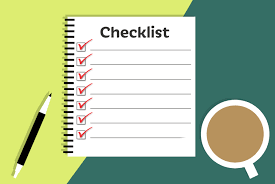 Lenders may use the terms pre-qualification and pre-approval interchangeably, but it’s generally understood that there are different levels of evaluation and approval available nowadays. Our goal is to make sure you understand what information your lender will be verifying and what assumptions they’re making when evaluating your financial scenario.
Lenders may use the terms pre-qualification and pre-approval interchangeably, but it’s generally understood that there are different levels of evaluation and approval available nowadays. Our goal is to make sure you understand what information your lender will be verifying and what assumptions they’re making when evaluating your financial scenario.
What’s the Difference Between a Pre-Qualification and a Pre-Approval?
Getting prequalified for a mortgage can be as simple as having a basic conversation with a lender regarding your income and assets. There are even apps available that can reliably generate prequalification numbers for you. Often, supporting documents aren’t required for review, nor is a formal credit check.
Getting pre-approved for a mortgage involves having a lender review your income and asset statements, pull up a copy of your credit report, and calculate your debt-to-income ratio. The purpose is to gather as much information as possible and pre-underwrite your application upfront.
Why Would You Want to be Pre-Approved for a Mortgage?
If the idea of spending time gathering paperwork and discussing your finances doesn’t seem as exciting as browsing online listings and attending open houses, you’re not alone. Many people make offers on homes without being pre-approved first — some of them work out and some find out the hard way that they can’t secure a loan.
When you’re serious about purchasing a home, you want to be as confident as possible in your ability to qualify for a loan. The best way gain that confidence is by having a lender review your financial scenario and supporting documentation to make sure your loan application is likely to be approved.
Additionally, submitting a pre-approval letter from your lender along with your offer lets the sellers and the real estate agents know that you’ve already started the loan process and that things look good. They can accept your offer and reasonably expect that you’ll get your loan. It’s peace of mind that could just put your offer over the top.
Your Documentation Checklist

While this list aims to be comprehensive, your individual scenario may require additional documentation, especially if you’re retired or self-employed. This list is typical of what most lenders will request in order to begin the pre-approval process:
- Federal income tax returns for the most recent two years.
- W2 forms for the most recent two years.
- Paystubs for the most recent 30 days.
- Year-end pay stubs if you receive consistent bonus, overtime, or other non-salary income.
- Account statements for the most recent 60 days for checking, savings, retirement and investment accounts.
- Your social security number and date of birth, in order to request a credit report.
If you’re retired, then statements from your pension, 401K, or IRA accounts may be needed, as well as your 1099-R forms. For social security income you’ll need to provide an award letter or 1099-SA.
If you’re self-employed you may need to provide business tax returns, profit and loss statements, and business bank statements. This list can be quite extensive, depending on how your income is structured, so don’t feel frustrated if your lender has follow-up questions and requests for you.
Dos and Don’ts for a Successful Pre-Approval Process
These are a few of the best practices you’ll want to implement, as well as a few key things to avoid as you’re going through the pre-approval process and ultimately purchasing a home:
| Dos | Don’ts |
| Do stick to your budget. Based on the documentation you provide, your lender should be able to provide you with a good idea of your max budget. If you decide to make an offer that exceeds your max pre-approval amount, then you could have to make up for the difference with additional down payment funds. | Don’t make large purchases or take out any new loans. This will impact your debt-to-income ratio and could change the terms and amount of your pre-approval. If you need to make a large purchase or take on a new debt, let your lender know immediately so they can update your scenario. |
| Do let your lender know if anything about your financial situation changes, for better or worse. A pre-approval letter is only as good as the information it’s based on. So, if you receive a pay increase, or take out a new car loan, your lender needs to know. | Don’t plan on changing jobs, quitting your job, or retiring — at least not until the loan process is complete. These life events can drastically affect your ability to qualify for a mortgage, so be sure to discuss them with your lender before you take any action. |
| Do submit specific pre-approval letters with each offer you make. The offer amount should be updated each time so that you’re not providing the sellers with information they shouldn’t have — like your max budget. | Don’t forget about property taxes, homeowner’s insurance, and homeowner’s association (HOA) dues when determining your budget. These factor into your overall monthly payments and are considered by lenders, but you’ll want a monthly payment you’re comfortable with as well as one you qualify for. |
What Steps Can You Take to Qualify for a Higher Purchase Price?
In order to maximize your purchasing power, you can focus on three key areas — your income, your debts, and your credit scores. Start by ensuring that all of your income sources are being considered correctly. If you have a two-year history of receiving bonus or overtime pay, it can be used to help you qualify. You can also consider adding your spouse or a co-borrower to the loan in order to include their additional income (note: their debts will be included too).
Paying down or paying off your installment and revolving debts will boost your purchase price by lowering your debt-to-income ratio. It’s a pretty straightforward inverse relationship; the fewer monthly obligations you have, the more home you can afford.
Your credit score has a direct effect on the interest rate you qualify for, and the higher it is, the better your rate. Since the interest rate is used to calculate your monthly payments and your debt-to-income ratio, having a great score and qualifying for the best rates can help maximize your purchase power.